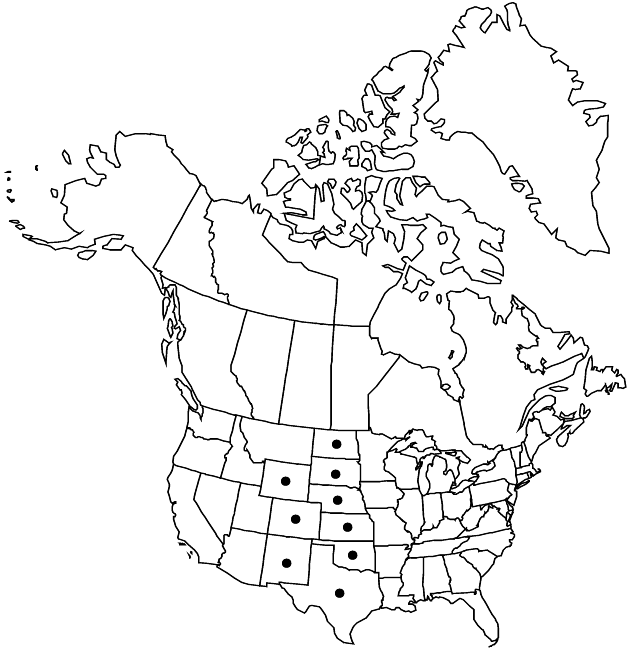Packera tridenticulata
Phytologia 49: 48. 1981.
Perennials, 10–30+ cm; taprooted (caudices ascending to erect). Stems 1 or multiple, clustered, usually glabrous, rarely sparsely floccose-tomentose, leaf-axils sometimes tomentose. Basal leaves (and proximal cauline, relatively thick and turgid) petiolate; blades lanceolate or narrowly oblanceolate, 20–40+ × 5–15 mm, bases tapering, margins usually entire, sometimes subpinnatisect (apices subentire or dentate). Cauline leaves gradually reduced (± petiolate or sessile). Heads 4–15+ in corymbiform arrays. Peduncles bracteate, glabrous or sparsely tomentose. Calyculi inconspicuous. Phyllaries 13 or 21, green, 6–10 mm, sparsely tomentose proximally, glabrous distally. Ray-florets 8–10 (–13); corolla laminae 5–8+ mm. Disc-florets 45–60+; corolla-tubes 3–3.5 mm, limbs 4–5 mm. Cypselae 1.5–2.5 mm, glabrous or sparsely hirtellous on ribs; pappi 5–6 mm. 2n = 46.
Phenology: Flowering late May–early Jul.
Habitat: Open, dry areas, roadsides, gravelly or sandy slopes, short-grass prairies or sagebrush scrubs
Elevation: 1000–2000 m
Distribution

Colo., Kans., Nebr., N.Mex., N.Dak., Okla., S.Dak., Tex., Wyo.
Discussion
Packera tridenticulata is found throughout the central High Plains, in the foothills of the Rocky Mountains, and in high valleys to the west of the Rocky Mountain front. It tends to grow in clumps; the multiple stems arise from well-developed taproots. It apparently hybridizes with P. neomexicana var. mutabilis where their ranges overlap.
Selected References
None.